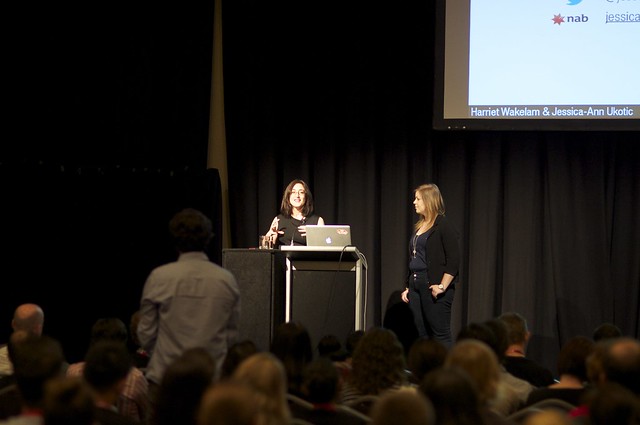Real world user experience or when channel finally dies
We keep talking about how customers don’t see life as multi-channel but that businesses with their mobile, online and retail divisions silo development to deliver fragmented channel specific experiences.
As a profession, we nod and sagely agree about the way in which channel specific experiences fail to deliver holistic experiences. But do we really take on the responsibility of having these conversations and demonstrating the power of real world experiences to those with the ability to change strategy.
This talk describes a project to test the new NAB retail store design and how it became a catalyst for increasing the respect and strategic use of experience design in a large organisation.
In July 2011 our small customer experience team was asked to evaluate whether new NAB retail store delivered an in innovative service experience to customers.
The scope included:
- multi-sensory experience (scent, audio and digital communications)
- self service (digital and ATM)
- wayfinding
- floor management
- design components
- merchandising
The team tested a prototype store pre-release and the iterations were released in the Docklands store in January 2012.
This presentation tells the story of how UX, Service design and product development methodologies were mashed together and applied to a complex multi-channel environment.
It is also a story of transformation – of design strategy and its use within the business, of new opportunities arising from quality conversations across silos and of a holistic approach to experience design. It’s a story of mentors creating champions in unlikely places, and of the de-mystifying of experience design.
It’s a story about gaining respect – of the design team gaining respect from the business, of the store staff gaining respect from the management teams, of all stakeholders gaining respect for customer behaviour and requirements.
It is the story of co-creation (cliche, I know) at its best – where the senior executives worked with bank tellers, change managers with store managers, designers with ATM technicians, architects with marketing specialists blending knowledge into a unique experience focussed on the activities between people and things.
Most importantly it’s the story of a journey of understanding, of not knowing and knowing, of trying things out until they worked, and more importantly of synthesis, conversation and trust.
We’ll share what we learnt, what we wished we’d known when we started, and what we’ll do next time and how we think this approach has the potential to kill the channel specific conversation…
